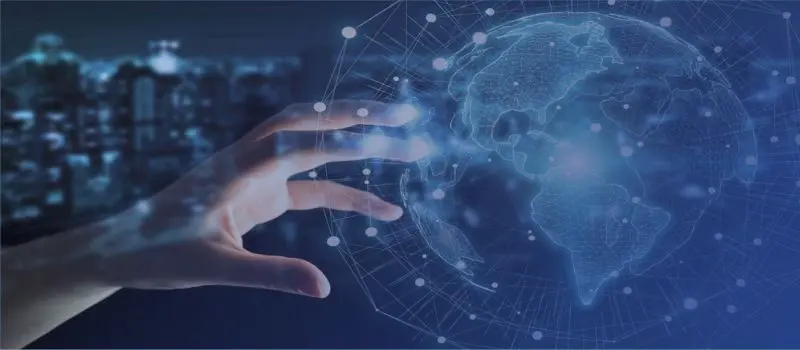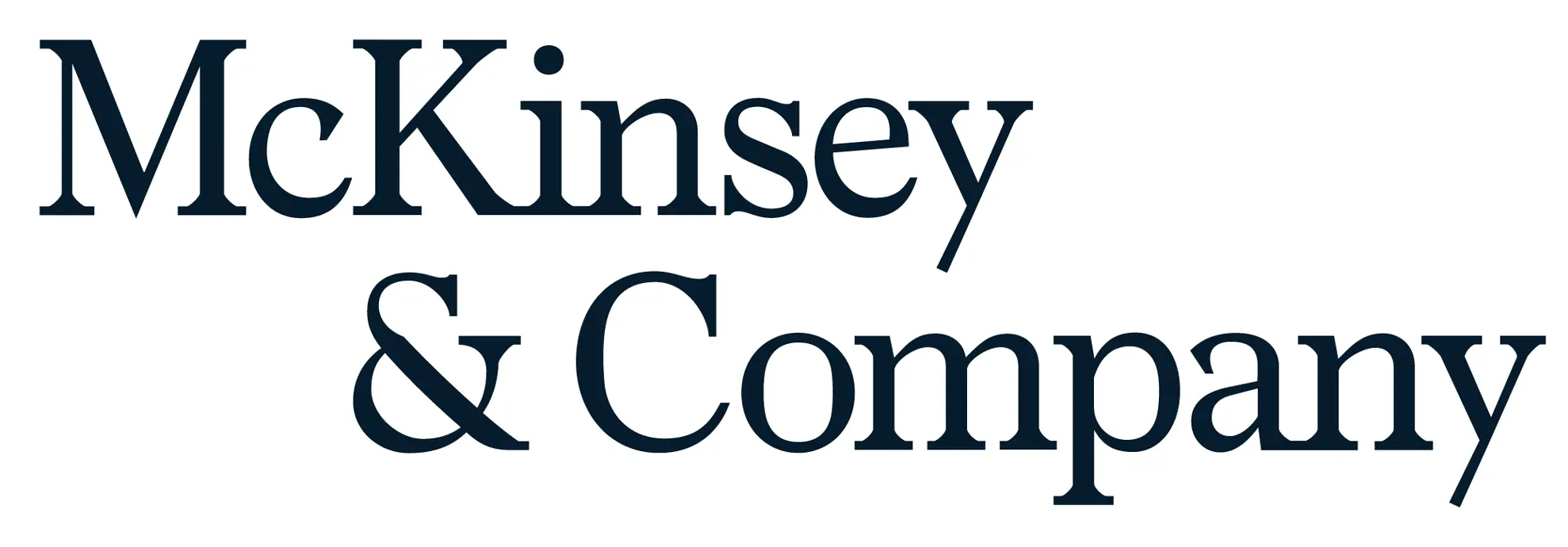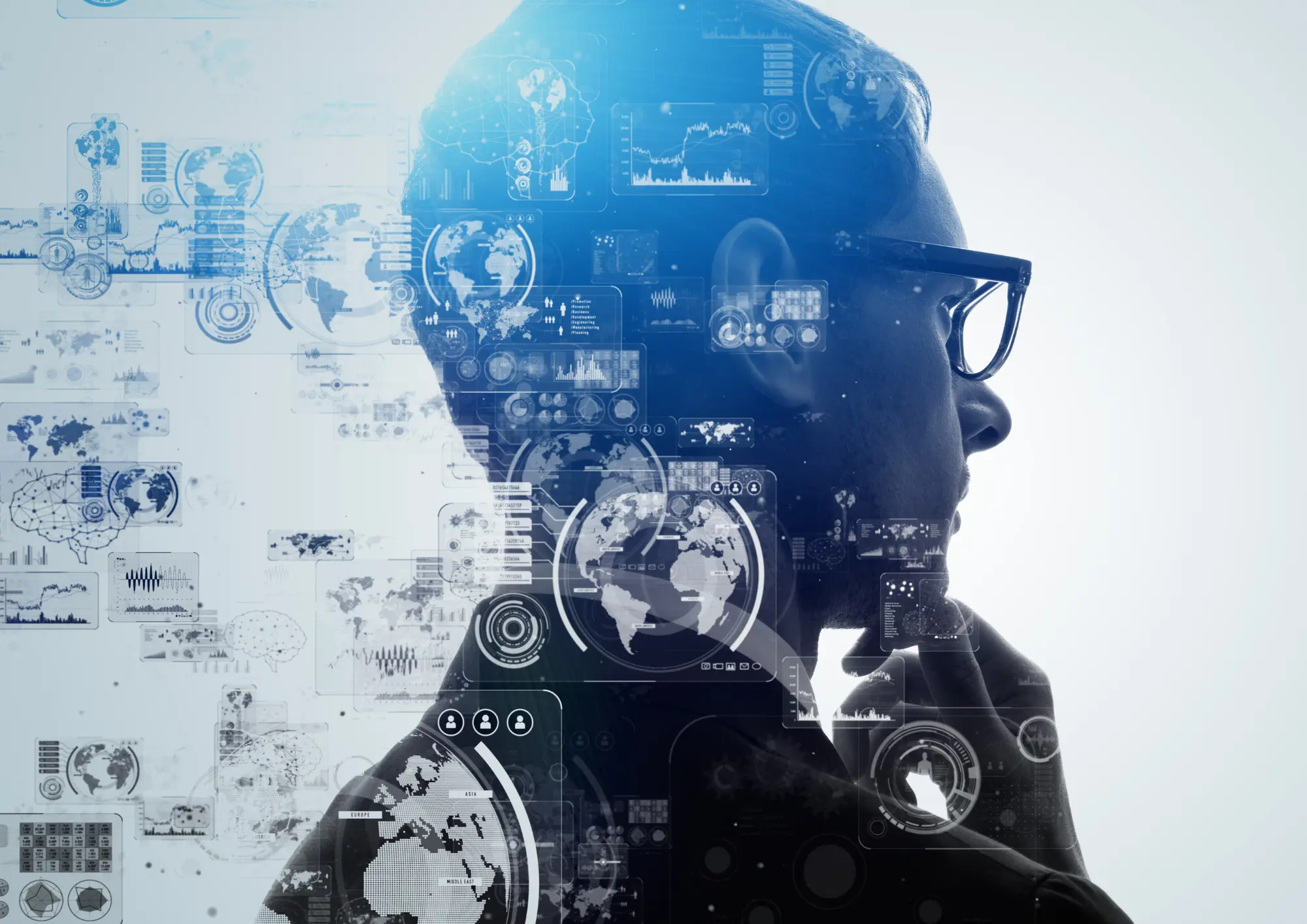
Germany Cyber Security Market Growth, Size, Trends, Share, Demand, Revenue and Future Outlook
Germany Cyber Security Market Size- By Security Type, By Offering, By End User- Regional Outlook, Competitive Strategies and Segment Forecast to 2033
| Published: Jul-2024 | Report ID: IACT24142 | Pages: 1 - 101 | Formats*: |
| Category : Information & Communications Technology | |||
- December 2023; Palo Alto Networks and IBM Consulting extended their strategic alliance with the goal of improving business security, with an emphasis on cloud transition and AI driven security operations. Through the partnership, clients end to end security postures will be strengthened in an effort to counter the growing risks in cyberspace.
- June 2023; A new SSE solution called Secure Access was unveiled by Cisco with the goal of improving hybrid work environments by streamlining access across many devices, locations, and apps. It provides a shared access experience by cleverly and securely channelling traffic, giving users a single, simple way to access all resources.
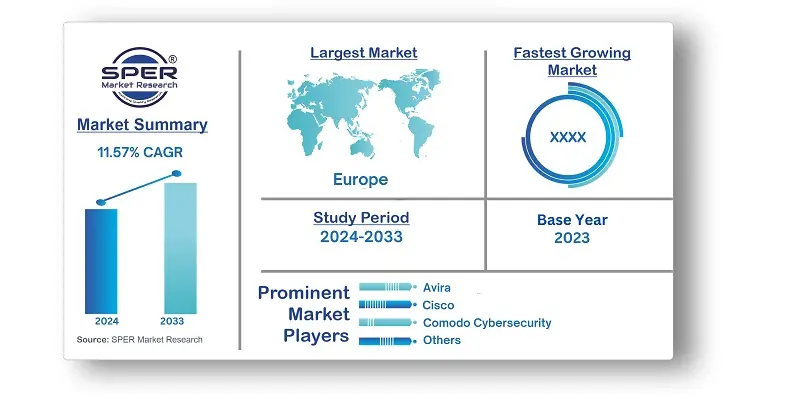
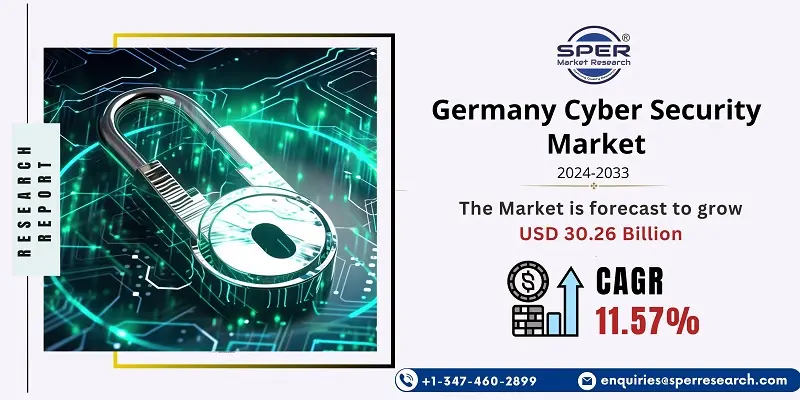
| Report Metric | Details |
| Market size available for years | 2020-2033 |
| Base year considered | 2023 |
| Forecast period | 2024-2033 |
| Segments covered | By Security Type, By Offering, By End User |
| Regions covered | Schleswig Holstein, Hamburg, Mecklenburg Vorpommern, Bremen, Brandenburg, Berlin, Rest of Germany |
| Companies Covered | Avira, Cisco, Comodo Cybersecurity, Dell, Fortinet, G DATA CyberDefense, IBM, Intel Security, Rohde & Schwarz Cybersecurity, Secunet, Others. |
- Enterprises
- Government Agencies
- Critical Infrastructure Operators
- Financial Institutions
- Healthcare Providers
- Educational Institutions
- Technology Companies
| By Security Type: |
|
| By Offering: |
|
| By End-Users: |
|
- Germany Cybersecurity Market Size (FY’2024-FY’2033)
- Overview of Germany Cybersecurity Market
- Segmentation of Germany Cybersecurity Market by Security Type (Network Security, Endpoint Security, Application Security, Cloud Security, Wireless Security, Others)
- Segmentation of Germany Cybersecurity Market by Offering (Products, Solutions and Services)
- Segmentation of Germany Cybersecurity Market by End-User (Power, Utilities, Transportation, Chemicals, Manufacturing)
- Statistical Snap of Germany Cybersecurity Market
- Expansion Analysis of Germany Cybersecurity Market
- Problems and Obstacles in Germany Cybersecurity Market
- Competitive Landscape in the Germany Cybersecurity Market
- Impact of COVID-19 and Demonetization on Germany Cybersecurity Market
- Details on Current Investment in Germany Cybersecurity Market
- Competitive Analysis of Germany Cybersecurity Market
- Prominent Players in the Germany Cybersecurity Market
- SWOT Analysis of Germany Cybersecurity Market
- Germany Cybersecurity Market Future Outlook and Projections (FY’2024-FY’2033)
- Recommendations from Analyst
1.1. Scope of the report1.2. Market segment analysis
2.1. Research data source2.1.1. Secondary Data2.1.2. Primary Data2.1.3. SPER’s internal database2.1.4. Premium insight from KOL’s2.2. Market size estimation2.2.1. Top-down and Bottom-up approach2.3. Data triangulation
4.1. Driver, Restraint, Opportunity and Challenges analysis4.1.1. Drivers4.1.2. Restraints4.1.3. Opportunities4.1.4. Challenges4.2. COVID-19 Impacts of the Germany Cyber Security Market.
5.1. SWOT Analysis5.1.1. Strengths5.1.2. Weaknesses5.1.3. Opportunities5.1.4. Threats5.2. PESTEL Analysis5.2.1. Political Landscape5.2.2. Economic Landscape5.2.3. Social Landscape5.2.4. Technological Landscape5.2.5. Environmental Landscape5.2.6. Legal Landscape5.3. PORTER’s Five Forces5.3.1. Bargaining power of suppliers5.3.2. Bargaining power of buyers5.3.3. Threat of Substitute5.3.4. Threat of new entrant5.3.5. Competitive rivalry5.4. Heat Map Analysis
6.1. Germany Cyber Security Market Manufacturing Base Distribution, Sales Area, Product Type6.2. Mergers & Acquisitions, Partnerships, Product Launch, and Collaboration in Germany Cyber Security Market
7.1. Germany Cyber Security Market Size, Share and Forecast, By Security Type, 2020-20267.2. Germany Cyber Security Market Size, Share and Forecast, By Security Type, 2027-20337.3. Network Security7.4. Endpoint Security7.5. Application Security7.6. Cloud Security7.7. Wireless Security7.8. Others
8.1. Germany Cyber Security Market Size, Share and Forecast, By Offering, 2020-20268.2. Germany Cyber Security Market Size, Share and Forecast, By Offering, 2027-20338.3. Products8.4. Solutions and Services
9.1. Germany Cyber Security Market Size, Share and Forecast, By End-Users, 2020-20269.2. Germany Cyber Security Market Size, Share and Forecast, By End-Users, 2027-20339.3. Power9.4. Utilities9.5. Transportation9.6. Chemicals and Manufacturing9.7. Others
10.1. Germany Cyber Security Market Size and Market Share
11.1. Germany Cyber Security Market Size and Market Share By Region (2020-2026)11.2. Germany Cyber Security Market Size and Market Share By Region (2027-2033)11.3. Schleswig Holstein11.4. Hamburg11.5. Mecklenburg Vorpommern11.6. Bremen11.7. Brandenburg11.8. Berlin11.9. Rest of Germany
12.1. AVIRA12.1.1. Company details12.1.2. Financial outlook12.1.3. Product summary12.1.4. Recent developments12.2. CISCO12.2.1. Company details12.2.2. Financial outlook12.2.3. Product summary12.2.4. Recent developments12.3. COMODO CYBERSECURITY12.3.1. Company details12.3.2. Financial outlook12.3.3. Product summary12.3.4. Recent developments12.4. DELL12.4.1. Company details12.4.2. Financial outlook12.4.3. Product summary12.4.4. Recent developments12.5. FORTINET12.5.1. Company details12.5.2. Financial outlook12.5.3. Product summary12.5.4. Recent developments12.6. G DATA CYBERDEFENSE12.6.1. Company details12.6.2. Financial outlook12.6.3. Product summary12.6.4. Recent developments12.7. IBM12.7.1. Company details12.7.2. Financial outlook12.7.3. Product summary12.7.4. Recent developments12.8. INTEL SECURITY12.8.1. Company details12.8.2. Financial outlook12.8.3. Product summary12.8.4. Recent developments12.9. ROHDE AND SCHWARZ CYBERSECURITY12.9.1. Company details12.9.2. Financial outlook12.9.3. Product summary12.9.4. Recent developments12.10. Others
SPER Market Research’s methodology uses great emphasis on primary research to ensure that the market intelligence insights are up to date, reliable and accurate. Primary interviews are done with players involved in each phase of a supply chain to analyze the market forecasting. The secondary research method is used to help you fully understand how the future markets and the spending patterns look likes.
The report is based on in-depth qualitative and quantitative analysis of the Product Market. The quantitative analysis involves the application of various projection and sampling techniques. The qualitative analysis involves primary interviews, surveys, and vendor briefings. The data gathered as a result of these processes are validated through experts opinion. Our research methodology entails an ideal mixture of primary and secondary initiatives.
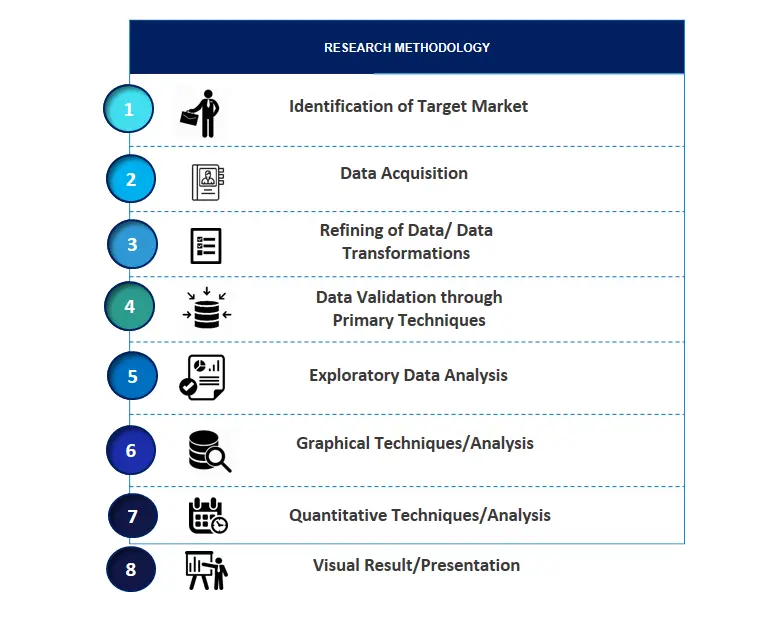
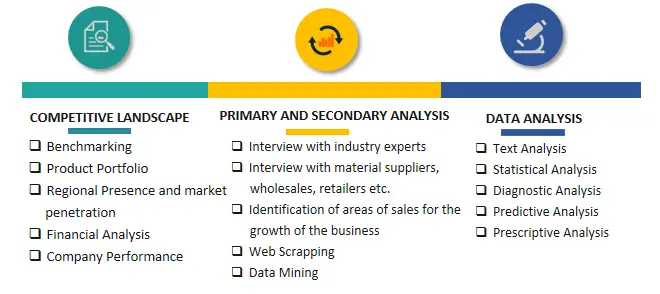

Frequently Asked Questions About This Report
PLACE AN ORDER
Year End Discount
Sample Report
Pre-Purchase Inquiry
NEED CUSTOMIZATION?
Request CustomizationCALL OR EMAIL US
100% Secure Payment






Related Reports
Our Global Clients
Our data-driven insights have influenced the strategy of 200+ reputed companies across the globe.


